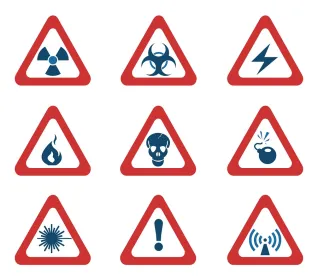On January 9, 2017, the Occupational Safety and Health Administration (OSHA) issued a final rule adopting a comprehensive standard for exposure to beryllium and beryllium compounds – a separate standard was promulgated for general industry, construction and shipyards. On May 4, 2018, OSHA issued a Direct Final Rule (DFR) regarding the beryllium standard for general industry. This followed the Agency’s announcement on April 30th that it had reached settlement with several industry petitioners who had challenged the general industry standard in the US Court of Appeals for the Eighth Circuit. The Agency has said that the DFR clarifies “aspects of the beryllium standard for general industry as it applies to process, operations, or areas where workers may be exposed to materials containing less than 0.1% beryllium by weight.”
This DFR adjusts the regulatory text of the general industry beryllium standard to clarify that OSHA does not intend for requirements that primarily address dermal contact to apply in processes, operations, or areas involving only materials containing less than 0.1% beryllium by weight. These clarifications are made through changes to the definition of beryllium work area; the addition of definitions of dermal contact, beryllium-contaminated, and contaminated with beryllium; clarifications of certain hygiene provisions with respect to beryllium contamination; and the clarifications to provisions for disposal and recycling. In addition, because under these changes it is possible to have a regulated area that is not a beryllium work area, this DFR makes changes to certain housekeeping provisions to ensure they apply in all regulated areas. Finally, this DFR also includes a change to the definition of “emergency”, adding detail to the definition so as to clarify the nature of the circumstances OSHA intends to be considered an emergency for the purposes of the standard.
The press has described the DFR as narrowing, easing, or limiting the standard’s definitions. In this Direct Final Rule, OSHA is adopting a number of clarifying amendments to address the application of the standard to materials containing trace amounts of beryllium. OSHA believes this rule will maintain safety and health protections for workers while reducing the burden to employers of complying with the current rule. According to OSHA, “this direct final rule is expected to be an Executive Order (E.O.) 13771 deregulatory action” with a net annual cost savings of $0.36 million per year. OSHA will consider comments on the DFR and if no significant adverse comments are received by June 4, 2018, OSHA will publish a Federal Register notice confirming the effective date of the changes and the DFR will take effect on July 4, 2018.
On May 11th OSHA began enforcement of certain requirements of the beryllium rule. For generally industry, construction and shipyards this included the permissible exposure limits. Further, in general industry enforcement began for the exposure assessment, respiratory protection, medical surveillance and medical removal requirements. According to OSHA, “The agency will delay enforcement of other ancillary provisions for general industry until June 25, 2018. The Agency plans to issue a proposal to further extend this compliance date for the ancillary provisions to Dec. 12, 2018.” For the construction and shipyard industries, only the permissible exposure limits and short term exposure limit are being enforced until OSHA undertakes additional rulemaking for those industries.




 />i
/>i
